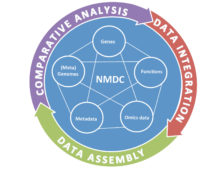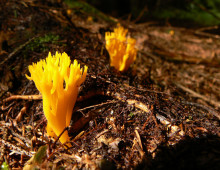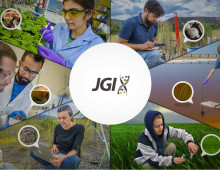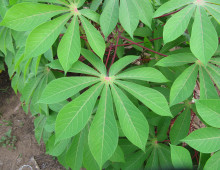Their unassuming appearances may cause them to be overshadowed by the plants or animals in their natural habitats, but fungi play key roles in maintaining their ecosystems. From breaking down leaf litter and decaying wood in forests to cleaning contaminated soils and waters, fungal enzymes are being characterized for potential use in a wide variety…
See and Sort: Developing Novel Techniques to Visualize Uncultured Microbial Cell Activity
New high-throughput and cost-effective approaches provide a better understanding of microbiome functioning Many uncultured microbes play unknown roles in regulating Earth’s biogeochemical processes; everything from regulating plant health to driving nutrient cycles in both terrestrial and marine environments, processes that can impact global climate. While researchers are harnessing multiple approaches to identify these microbes, referred to…
Insights into How Soil Microbes Regulate Carbon & Sulfur Cycling
Researchers find rare sulfate reducers substantially affect methanogenesis in peatlands. The Science Utilizing microcosms of peat soil, researchers mimicked naturally fluctuating conditions to study sulfate-reducing microbes and how they regulate methane production in peat microbial communities. The Impact Numbers by themselves don’t tell the whole story. Microbes found in low abundance can play key roles…
Cuing Environmental Responses in Fungi
Genome sequences provide clues to the evolution of sensory perception Fungi can sense environmental signals and react accordingly, changing their development, direction of growth, and metabolism. Sensory perception lies at the heart of adaptation to changing conditions, and helps fungi to improve growth and recycle organic waste, and to know when and how to infect…
A Rallying Call for Microbiome Science National Data Management
A National Microbiome Data Center is essential for enabling exploration of all the environmental genomic data. Massive amounts of data require infrastructure to manage and store the information in a manner than can be easily accessed for use. While technologies have scaled to allow researchers to sequence and annotate communities of microorganisms within an environment,…
Evaluating the cost of accuracy of sequencing approaches
Researchers perform benchmark study for improving microbial community profiling. The Science Researchers use synthetic and natural microbial lake communities to compare the microbial community profiles generated from high throughput short-read sequencing and high throughput long-read sequencing approaches. The Impact Microbes play key roles in maintaining the planet’s biogeochemical cycles, but only a fraction of them…
Refining the origins of wood-rotting mechanisms
Genome sequences of early-diverging fungi help track origins of white rot fungi. The Science Researchers utilized draft genome sequences of 10 white rot and brown rot fungi representing early-diverging groups to help refine the timeline that dates the enzymatic origins of lignocellulose decomposition. The Impact Fungi are natural degraders of plant material and contain enzymes…
Every Day is Earth Day @ JGI: From A to Z
Providing the infrastructure for tackling energy, environmental challenges. Every year, Earth Day reminds us to continue to provide a cleaner, healthier and sustainable environment for everyone to live in. For those of us who work at the U.S. Department of Energy Joint Genome Institute (DOE JGI) though, every day is Earth Day as our resources…
Mapping a Path to Improved Cassava Production
Comparative analysis highlights impacts of previous breeding programs on cassava genome. For nearly a billion people around the world, cassava is a staple crop and a primary source of calories. The plant is easy to cultivate – cuttings grow well on marginal land—and it is very tolerant of drought. For the U.S. Department of Energy,…
Updating microbial diversity representation on the tree of life
Cultivation-independent methods and bioinformatics have dramatically expanded the number of available genome sequences. The Science Using publicly available data sets from multiple sources, including the DOE Joint Genome Institute’s data management system, researchers have reorganized the tree of life to reflect the over 30,000 eukaryote, bacterial and archaeal genomes now known. The Impact The expansion…









